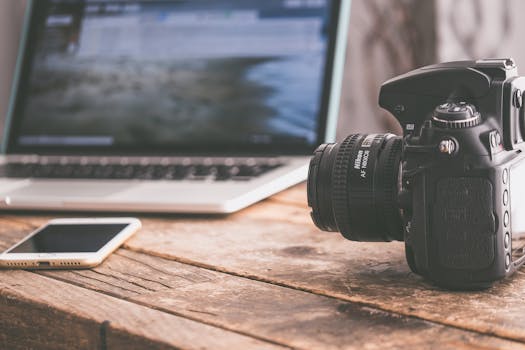Computational Photography vs Hardware: Which Smartphone Camera Upgrade Matters?
9/22/2025 · Smartphone Cameras · 8 min

TL;DR
- Computational photography uses software to squeeze better images from limited hardware. It can feel like a free upgrade on many phones.
- Hardware upgrades like larger sensors, faster lenses, and optical stabilization still matter most for low light, bokeh quality, and high frame rate video.
- Best upgrade priorities: sensor size and stabilization first for low light and motion, then optics for clarity, then image processing for dynamic range and color.
Computational vs hardware explained
- Computational photography covers HDR stacking, multi-frame noise reduction, super resolution, portrait segmentation, and AI-based sharpening and color grading.
- Hardware improvements include larger sensor area, bigger pixels, better lens elements, optical image stabilization, and native optical zoom.
- Software can compensate a lot, but it cannot recover photons that were never captured. Hardware increases signal to noise at the source.
Resolution and detail
- More megapixels only help when sensor size or pixel quality keeps up. Small sensors with very high MP can look worse in low light due to smaller pixels.
- Computational super resolution can improve detail by combining multiple frames, but it depends on steady shooting or fast burst capture.
Sensor size and pixel design
- Larger sensors gather more light and reduce noise, especially at night. This is the single most important hardware spec for image quality.
- Pixel binning lets phones simulate larger effective pixels at the cost of resolution; combined with computational NR this is highly effective.
Optics, stabilization, and real-world sharpness
- Good lenses reduce aberrations and improve corner sharpness and contrast. Cheap optics limit the effective detail even if MP is high.
- Optical image stabilization (OIS) boosts exposure times without blur and enables cleaner low light shots and steadier video. Computational stabilization helps, but OIS wins for long exposures.
Low light and dynamic range
- Computational techniques like multi-frame averaging, motion deghosting, and AI denoising can dramatically improve night shots on modern phones.
- Hardware that captures more light per frame still produces cleaner, more natural results and retains highlight detail better during aggressive processing.
Video needs both sides
- Video benefits from hardware when it comes to rolling shutter, high bitrate recording, sustained thermal performance, and true optical zoom.
- Software features like frame interpolation, HDR video stacking, and stabilization algorithms improve perceptual smoothness but can introduce artifacts under challenging conditions.
Storage, processing, and battery impact
- Heavy computational photography costs CPU and battery, and it produces larger files if you enable RAW plus processed outputs.
- Phones with faster NPUs or dedicated imaging chips handle advanced processing more efficiently and with fewer artifacts.
Which approach should you prioritize?
- Choose hardware first if you:
- Shoot a lot in low light or night scenes.
- Need reliable optical zoom and subject isolation.
- Record long or high bitrate video.
- Choose software-first if you:
- Mostly shoot daytime photos and social media content.
- Want the best value in a midrange phone where flagship hardware is out of budget.
Practical buying checklist
- Sensor size and pixel size: prioritize larger sensor area over raw megapixels.
- OIS and stabilization: essential for low light photos and smooth video.
- Optics: look for multi element lenses and low distortion.
- Processing hardware: phones with modern NPUs or imaging chips handle computation better and more efficiently.
- RAW support: vital if you plan to edit; check if the phone outputs DNG or proprietary RAW.
- Zoom method: optical zoom is preferable to digital or hybrid zoom for quality.
- Battery and thermals: sustained processing can throttle image pipelines, so choose a device with proven thermal management.
Bottom line
Good computational photography can transform midrange hardware and deliver impressive results for day to day shooting, social sharing, and HDR scenes. But for consistently superior low light performance, true optical zoom, and the cleanest video, hardware upgrades like larger sensors, faster optics, and OIS remain decisive. If budget allows, prioritize sensor size and stabilization first, then seek phones with strong computational stacks for the best overall camera experience.
Found this helpful? Check our curated picks on the home page.